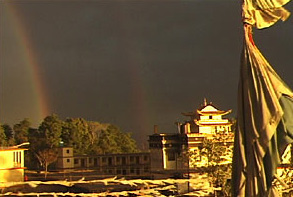 |
In 1950 Chinese communist forces invaded the long established independent and sovereign country of Tibet thus beginning a long and agonizingly brutal occupation. As the Chinese occupation increasingly and systematically began denying traditional Tibetan cultural expression and religious practice, tens of thousands of Tibetans refugees began to leave their occupied homeland in search of political and religious freedom in the neighboring countries of India, Nepal, Bhutan and Sikkim. This outward flow increased dramatically after the 1959 independence demonstrations and subsequent deadly Chinese response and crackdown. Though risking death, capture, and torture, tens of thousands of Tibetans, including the present, fourteenth Dalai Lama, made the arduous and extremely dangerous trip over the Himalayan mountain ranges to freedom as exiles in foreign lands.
Due to many of the hardships facing new immigrants such as cultural and family displacement, isolation, disease, and acculturation into new societies, many exiled people have had to make significant sacrifices of the unique traditions of their origins. This is especially poignant in respect to the Tibetan immigrant population. It is estimated that over 1.2 million Tibetans out of a total population of approximately 6 million have died as a direct result of the Chinese occupation. Many tens of thousands have been imprisoned and tortured and the vast majority still living in Tibet continue to do so under tremendous duress and hardship. Currently the exile community population is estimated at about 130,000 worldwide.
 |
As traditional cultural and religious affairs have been and are still being systematically destroyed in Tibet it is largely the responsibility of the exiles to carry on and protect their ancient knowledge, values, practices, and cultural heritage. Some of these communities as much as possible are re-creations of their historical ones in Tibet before the invasion, hostile occupation, and violent repression by the Chinese. Others are more eclectic groupings of Tibetans from various parts of historic Tibet living together out of expediency with limited means and the lack of feasible alternatives. As the lay communities were re-established in exile, so were the monasteries and the monastic orders. In the 1960s many Tibetan refugee settlements were created in India and other host countries. In 1967 the exile settlement of Bir was established in the foothills of the Indian Himalayas.
 |